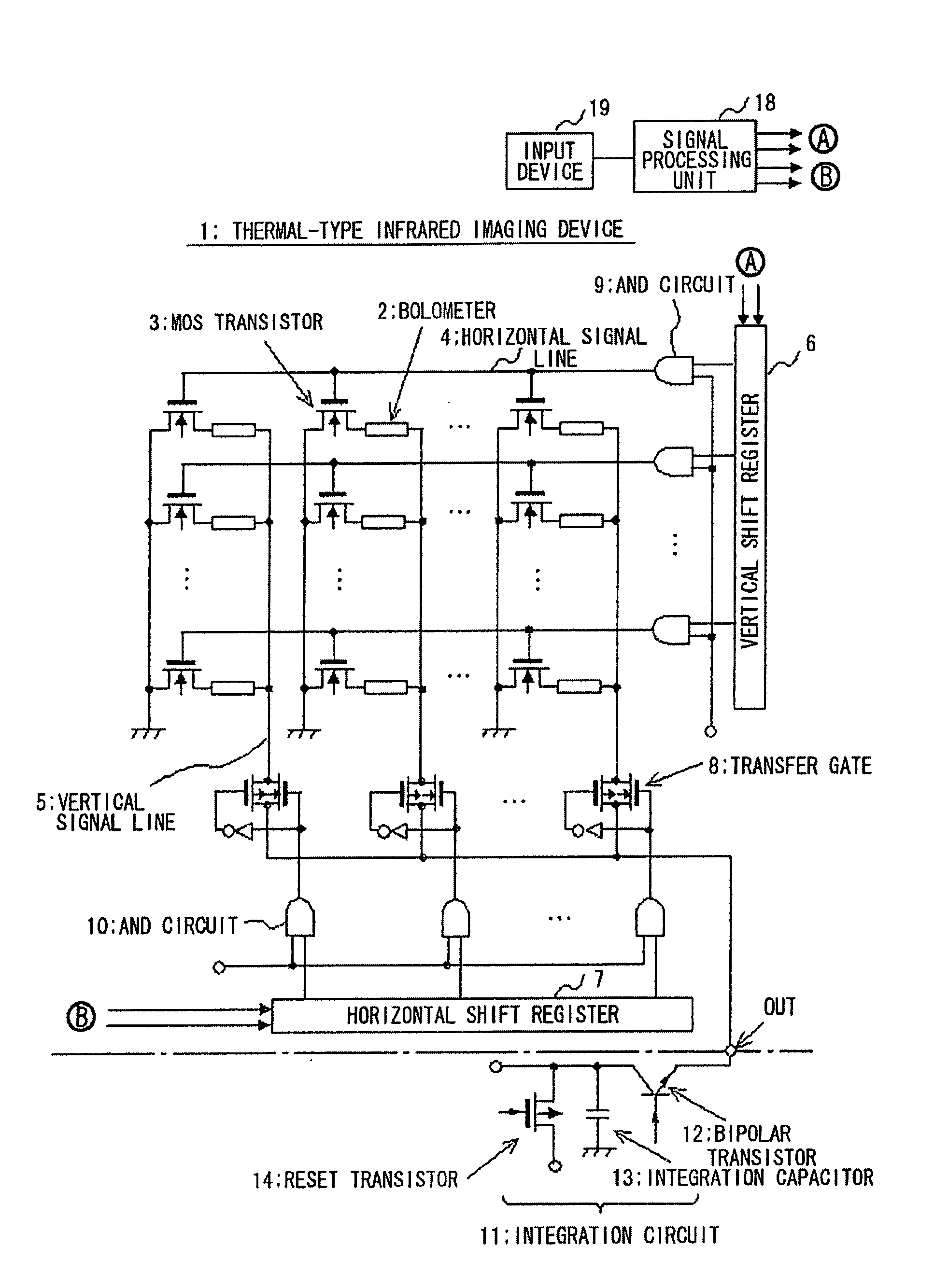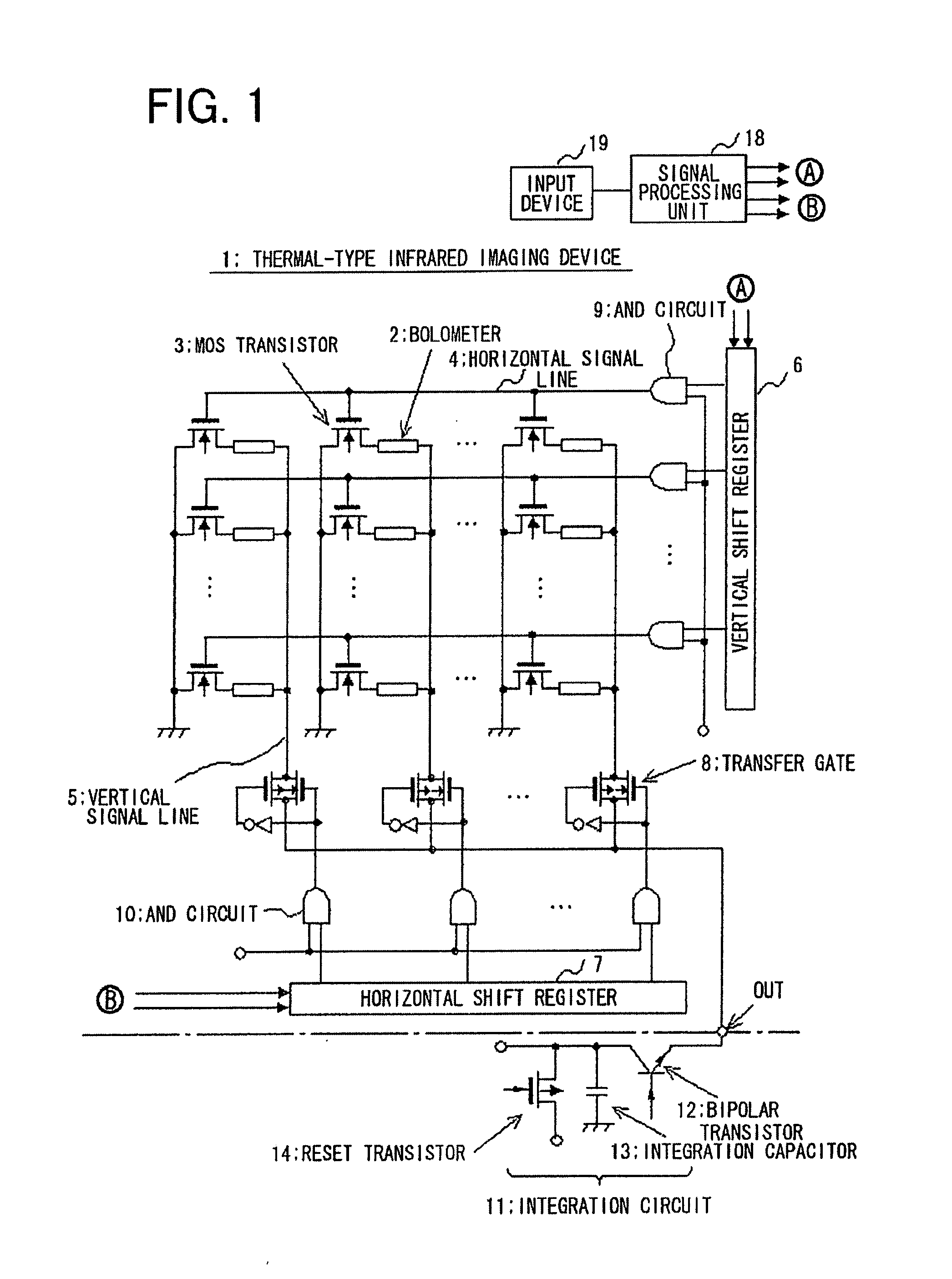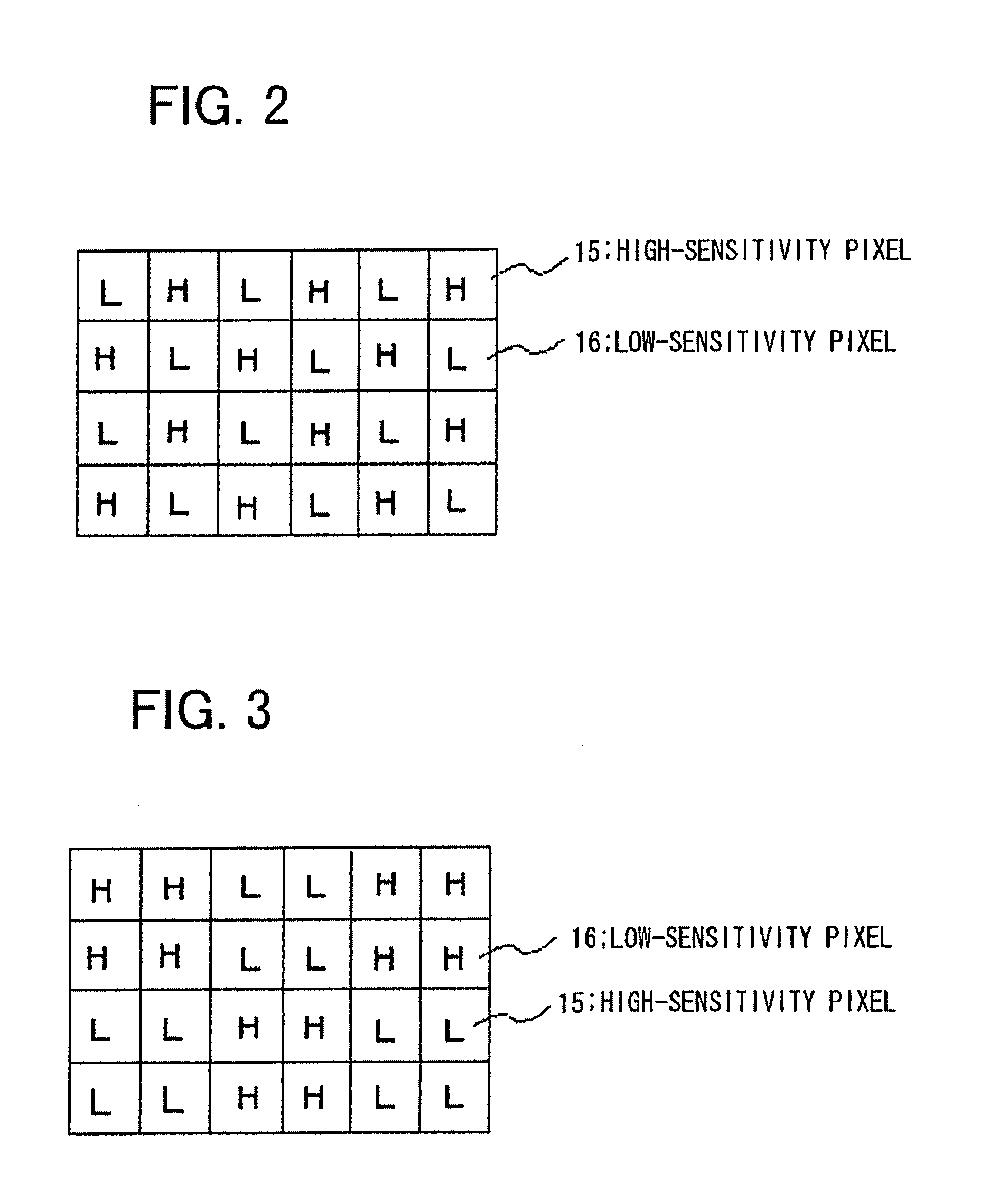Thermal-type infrared imaging device and operation method thereof
a technology of infrared imaging and thermal imaging, which is applied in the field of imaging devices, can solve the problems of loss of temperature information, inability to output appropriate temperature information, and difficulty in achieving both high temperature resolution and wide temperature measurement range at the same time, and achieves the effect of wide temperature measurement range and high temperature resolution
- Summary
- Abstract
- Description
- Claims
- Application Information
AI Technical Summary
Benefits of technology
Problems solved by technology
Method used
Image
Examples
first exemplary embodiment
[0039]To describe the preferred exemplary embodiment of the present invention more in detail, a thermal-type infrared imaging device in a first exemplary embodiment of the present invention and its operation method will be described with reference to FIG. 1 to FIG. 5. FIG. 1 is a circuit diagram showing the configuration of the thermal-type infrared imaging device in this exemplary embodiment, and FIG. 2 to FIG. 4 are diagrams showing the arrangement of pixels in the thermal-type infrared imaging device in this exemplary embodiment. FIG. 5 is a flowchart showing the operation of the thermal-type infrared imaging device in this exemplary embodiment.
[0040]As shown in FIG. 1, a thermal-type infrared imaging device 1 comprises an infrared ray detection unit composed of multiple pixels arranged two dimensionally, a signal processing unit that processes signals from the infrared ray detection unit, and so on. The signal processing unit comprises internal circuits built in the substrate an...
second exemplary embodiment
[0051]Next, a thermal-type infrared imaging device in a second exemplary embodiment of the present invention and its operation method will be described with reference to FIG. 6. FIG. 6 is a diagram showing the arrangement of pixels in the thermal-type infrared imaging device in this exemplary embodiment.
[0052]In the first exemplary embodiment described above, the multiple devices arranged in a two-dimensional matrix are classified into high-sensitivity pixels 15 and low-sensitivity pixels 16. In this exemplary embodiment, the multiple devices arranged two-dimensionally are classified into three types as shown in FIG. 6, that is, high-sensitivity pixels (H) 15, low-sensitivity pixels (L) 16, and intermediate-sensitivity pixels 17 (pixel indicated by M) that has a sensitivity lying between the high sensitivity and the low sensitivity. Those three types of pixels are used to achieve three types of sensitivities at the same time Those three types of sensitivities enable a subject to be ...
PUM
 Login to View More
Login to View More Abstract
Description
Claims
Application Information
 Login to View More
Login to View More - R&D
- Intellectual Property
- Life Sciences
- Materials
- Tech Scout
- Unparalleled Data Quality
- Higher Quality Content
- 60% Fewer Hallucinations
Browse by: Latest US Patents, China's latest patents, Technical Efficacy Thesaurus, Application Domain, Technology Topic, Popular Technical Reports.
© 2025 PatSnap. All rights reserved.Legal|Privacy policy|Modern Slavery Act Transparency Statement|Sitemap|About US| Contact US: help@patsnap.com



